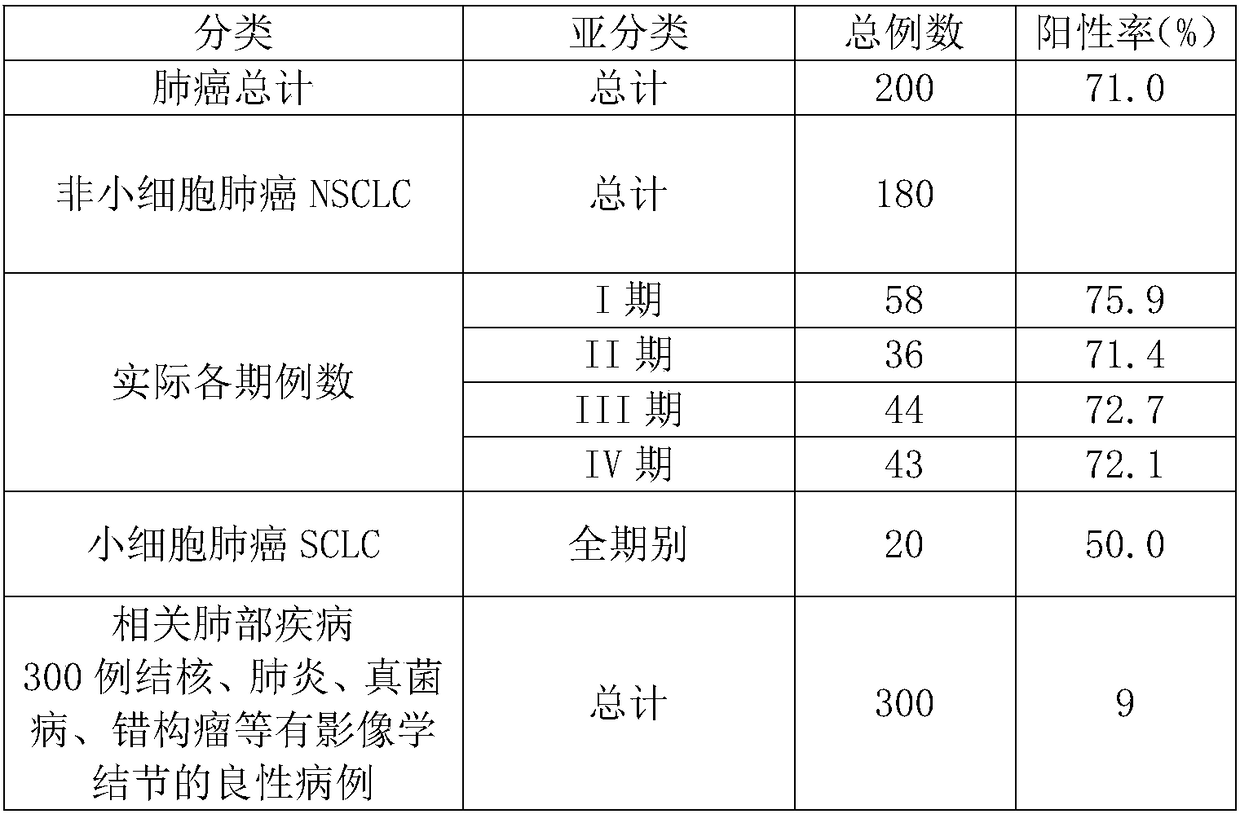Protein chip for lung cancer diagnosis and kit
A lung cancer diagnosis and protein chip technology, applied in disease diagnosis, measuring devices, instruments, etc., can solve the problems of invasiveness and high detection cost, inability to use crowd screening, and inconvenient detection of serum samples
- Summary
- Abstract
- Description
- Claims
- Application Information
AI Technical Summary
Problems solved by technology
Method used
Image
Examples
Embodiment 1
[0092] Embodiment 1 Preparation of the kit containing the protein chip for diagnosis of lung cancer (liquid protein chip diagnostic kit)
[0093] Preparation of antigenic protein chip (liquid chip): purchase commercialized magnetic microbeads from Luminex Company, firstly couple biotin-BSA to magnetic microbeads-COOH through amino coupling reagent, and use the purification and recombination of the 12 kinds of antigens prepared above Proteins (containing Streptavidin tags) bind 12 antigens to the surfaces of magnetic microbeads of different colors through the combination of biotin on the surface of the magnetic microbeads and the Streptavidin tags contained in the antigens. Then add a layer of PBS containing 20% fetal bovine serum on the surface of the magnetic microbeads, place it at room temperature for 1 hour, and then place it overnight at 4°C to fully seal the non-specific protein cross-linking or binding sites on the magnetic microbeads, and finally divide Pack and stor...
Embodiment 2
[0095] Example 2 The kit in Example 1 above was used to diagnose lung cancer and differentiate it from benign pulmonary nodules.
[0096] 200 cases of lung cancer patients and 300 cases of lung benign nodules were detected using the kit described in Example 1 (using protein chip plus immunofluorescence method) to determine the diagnostic criteria for lung cancer. The results are shown in Table 1.
[0097] Table 1
[0098]
[0099] Among 200 cases of lung cancer patients and 300 cases of lung benign nodules, the kit detected 142 positive cases of lung cancer patients and 27 cases of positive lung benign nodules. Therefore, the sensitivity of the kit for diagnosing lung cancer was 71.0%. The specificity of the differential diagnosis of benign pulmonary nodules was 91.0%, indicating that the sensitivity of the kit for the diagnosis of lung cancer and the specificity of the differential diagnosis of benign pulmonary nodules were high.
[0100] Among the 200 cases of lung canc...
PUM
 Login to View More
Login to View More Abstract
Description
Claims
Application Information
 Login to View More
Login to View More - R&D
- Intellectual Property
- Life Sciences
- Materials
- Tech Scout
- Unparalleled Data Quality
- Higher Quality Content
- 60% Fewer Hallucinations
Browse by: Latest US Patents, China's latest patents, Technical Efficacy Thesaurus, Application Domain, Technology Topic, Popular Technical Reports.
© 2025 PatSnap. All rights reserved.Legal|Privacy policy|Modern Slavery Act Transparency Statement|Sitemap|About US| Contact US: help@patsnap.com


